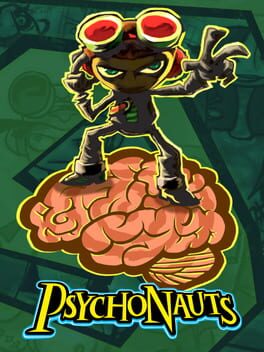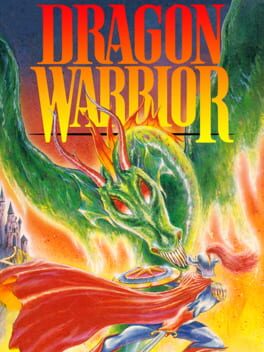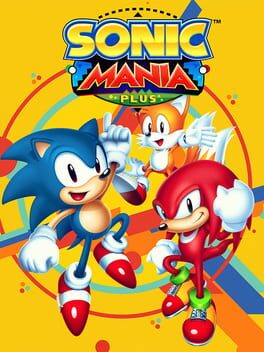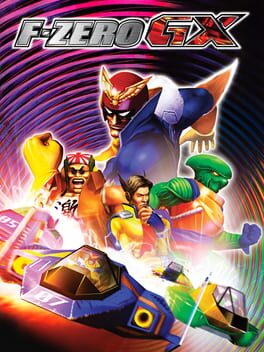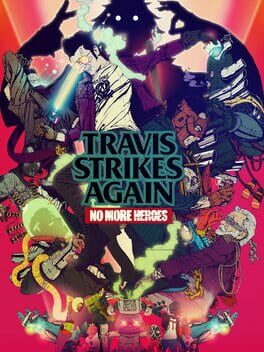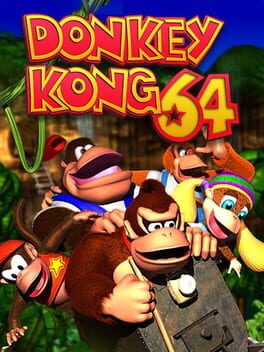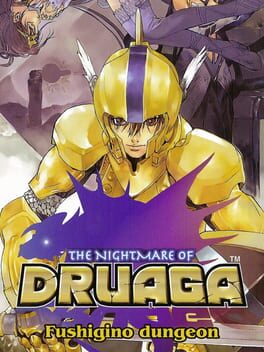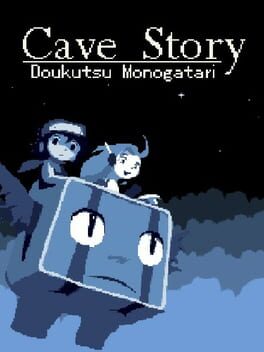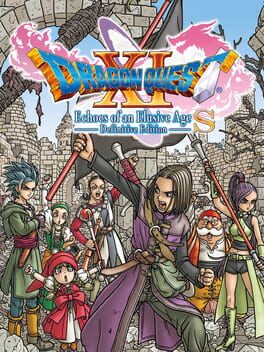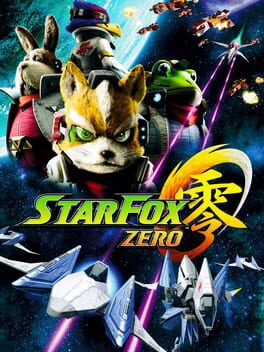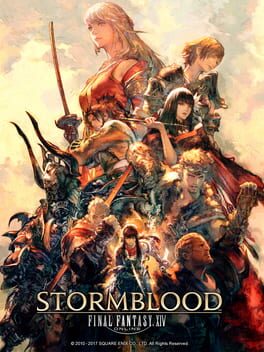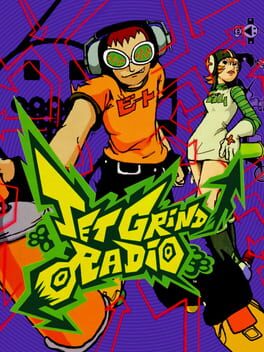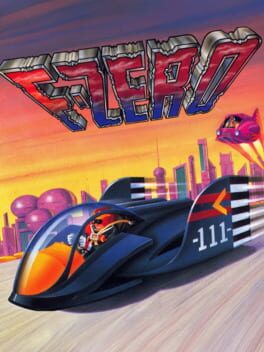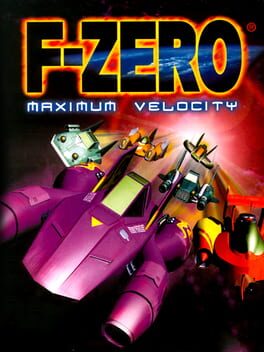2005
I believe it is more than fair to consider Psychonauts is now a definite cult classic.
Lucasfilm Games comedic veteran Tim Schafer launched his own company Double Fine back in 2000 and this game was immediately in the production pipeline, originally under the back of Microsoft out of all publishers, alas that would abruptly change amidst development.
Psychonauts is an outrageously creative platforming game that takes few inspirational cues from Rayman 2: The Great Escape, all while still being entirely it's own mindblasting specimen. You take the role of Razputin (Raz for short) who is a child circus acrobat with telekinetic powers that escapes his life on the road to be tutored further on his psychic powers in a designated summer camp for prodigious children like him, and is managed by special international secret agents. If that was not already weird enough, you are trained in the ways of the "Psychonaut", a specialist that can access the surreal and abstract mental worlds of other people to unlock their deepest secrets and reasoning for their erratic behavior.
The platforming controls are pretty solid and over time it unlocks more tools to make your journeys from point A to point B faster and more fun, and be it keyboard or controller it is a good ride to jump into.
Psychonauts may be a 3D platformer at most, but it still carries plenty of the DNA from Lucasfilm/LucasArts point-n-click adventures, the game has a lot of dialog on each character and they can give you different answers depending on the kinds of questions you make and even the actions you perform around or onto them. All this and considering the writing is nothing short of phenomenal.
Psychonauts always deserved far better attention and sales from its launch in 2005, and if anything I believe it has solidified its reputation these days especially with the starry sequel it finally got just 2 years ago.
You definitely must play this one.
Lucasfilm Games comedic veteran Tim Schafer launched his own company Double Fine back in 2000 and this game was immediately in the production pipeline, originally under the back of Microsoft out of all publishers, alas that would abruptly change amidst development.
Psychonauts is an outrageously creative platforming game that takes few inspirational cues from Rayman 2: The Great Escape, all while still being entirely it's own mindblasting specimen. You take the role of Razputin (Raz for short) who is a child circus acrobat with telekinetic powers that escapes his life on the road to be tutored further on his psychic powers in a designated summer camp for prodigious children like him, and is managed by special international secret agents. If that was not already weird enough, you are trained in the ways of the "Psychonaut", a specialist that can access the surreal and abstract mental worlds of other people to unlock their deepest secrets and reasoning for their erratic behavior.
The platforming controls are pretty solid and over time it unlocks more tools to make your journeys from point A to point B faster and more fun, and be it keyboard or controller it is a good ride to jump into.
Psychonauts may be a 3D platformer at most, but it still carries plenty of the DNA from Lucasfilm/LucasArts point-n-click adventures, the game has a lot of dialog on each character and they can give you different answers depending on the kinds of questions you make and even the actions you perform around or onto them. All this and considering the writing is nothing short of phenomenal.
Psychonauts always deserved far better attention and sales from its launch in 2005, and if anything I believe it has solidified its reputation these days especially with the starry sequel it finally got just 2 years ago.
You definitely must play this one.
1986
O brave warrior, save us from such a dreadful omen!
Dragon Warrior is a milestone of a game not just for NES, but for the future of video games altogether. Late to the party from North America by three years, it is considered to be THE original "Japanese Role-Playing Game" experience that cemented a subgenre that would become pivotal to the ecosystem.
Sure, the mechanics are old and outdated, however I have managed to appreciate them as "antiques" rather than something rotten, like a very old liquor that manages to feel refined with age... all with a historical perspective of course. Progress on Dragon Warrior may be perceived as sluggish and relatively monotone compared to far more solid hits that came later years, but by all means Dragon Warrior really never does something "wrong" by the contextual standards. It does help that Akira Toriyama's illustrations had become part of this project's conception as they do breathe a lot of air in the enemy character sprites.
I recommend you to experience Dragon Warrior as a timepiece, I believe you need certain mindset to fully appreciate the significance of this game in this day and age.
Dragon Warrior is a milestone of a game not just for NES, but for the future of video games altogether. Late to the party from North America by three years, it is considered to be THE original "Japanese Role-Playing Game" experience that cemented a subgenre that would become pivotal to the ecosystem.
Sure, the mechanics are old and outdated, however I have managed to appreciate them as "antiques" rather than something rotten, like a very old liquor that manages to feel refined with age... all with a historical perspective of course. Progress on Dragon Warrior may be perceived as sluggish and relatively monotone compared to far more solid hits that came later years, but by all means Dragon Warrior really never does something "wrong" by the contextual standards. It does help that Akira Toriyama's illustrations had become part of this project's conception as they do breathe a lot of air in the enemy character sprites.
I recommend you to experience Dragon Warrior as a timepiece, I believe you need certain mindset to fully appreciate the significance of this game in this day and age.
2018
In 2016 SEGA announced they were doing something uncalled for: they trusted their flagship mascot to the hands of a dream team of romhackers and built together the ultimate 2D Sonic game.
Sonic Mania is an absolute marvel of pixel art craft, music arrangement, and utmost dedication to tribute Sonic's most famed years; and in the PLUS release, his oldest and more obscure friends return as well: Ray the Flying Squirrel and Mighty the Armadillo, and they both bring their unique gameplay quirks enrichening the experience altogether.
The aesthetic direction was designed to represent a hypothetical scenario showing "what if Sonic had a sequel of the original games on SEGA Saturn?" The way the sprites have been crafted with the music that would be fitting for a release circa 1995 makes the entire illusion come together, it is so good in fact that several people have deemed this to be the REAL Sonic the Hedgehog 4.
You cannot go wrong with this one whatsoever, give it a spindash and get marveled at the booming soundtrack.
Sonic Mania is an absolute marvel of pixel art craft, music arrangement, and utmost dedication to tribute Sonic's most famed years; and in the PLUS release, his oldest and more obscure friends return as well: Ray the Flying Squirrel and Mighty the Armadillo, and they both bring their unique gameplay quirks enrichening the experience altogether.
The aesthetic direction was designed to represent a hypothetical scenario showing "what if Sonic had a sequel of the original games on SEGA Saturn?" The way the sprites have been crafted with the music that would be fitting for a release circa 1995 makes the entire illusion come together, it is so good in fact that several people have deemed this to be the REAL Sonic the Hedgehog 4.
You cannot go wrong with this one whatsoever, give it a spindash and get marveled at the booming soundtrack.
2003
In an extremely rare opportunity -- and an absolutely unheard one at the time -- Nintendo and SEGA joined hands to conceive a monstrous speed demon of a racing game.
Developed by Amusement Vision and utilizing the engine that powers their Super Monkey Ball games, F-ZERO GX is an obscenely FAST racing game that will constantly punish clumsy maneuvering, and it will feel good as it happens.
Maneuvering is everything in this game, and the design around the GameCube controller makes it so your delicate touch on the shoulder buttons will easily make the difference between you taking home the gold, or becoming a sticker on a wall.
The graphics are nothing to scoff at with a striking visual presentation while maintaining a virtually constant 60fps, and the soundtrack goes from electronic to a fusion with heavy metal, it is a joy for both eyes and ears.
If you are building a GameCube collection, this entry is a must on your library. Do not miss this one out.
Developed by Amusement Vision and utilizing the engine that powers their Super Monkey Ball games, F-ZERO GX is an obscenely FAST racing game that will constantly punish clumsy maneuvering, and it will feel good as it happens.
Maneuvering is everything in this game, and the design around the GameCube controller makes it so your delicate touch on the shoulder buttons will easily make the difference between you taking home the gold, or becoming a sticker on a wall.
The graphics are nothing to scoff at with a striking visual presentation while maintaining a virtually constant 60fps, and the soundtrack goes from electronic to a fusion with heavy metal, it is a joy for both eyes and ears.
If you are building a GameCube collection, this entry is a must on your library. Do not miss this one out.
Beneath its relatively lackluster gameplay, Travis Strikes Again is a very artful game that narrates the life and career of Goichi Suda. There are a lot of analogies that tell his love for games as a form of expression, and how infamous ventures with Electronic Arts had him burnt out from his visions and so he tells us the player what he has been up to, in a sense just reassuring us he is not dead and he has just been contemplating many things through the years, not to mention the very end of the game served as a surprise of what was to come after 2019.
Travis Strikes Again is an odd game, it does not have much of a replay value, but it is definitely worth at least one go and worth your attention if you're invesited on the perspective of game developers.
Travis Strikes Again is an odd game, it does not have much of a replay value, but it is definitely worth at least one go and worth your attention if you're invesited on the perspective of game developers.
1999
Infamous for allegedly "killing the collectathon genre", Donkey Kong 64 is an Xtra-Large gorilla sized 3D adventure to burn lots of hours into.
It does use a lot of the bells and whistles that could only be offered with the 8MB RAM upgrade such as more advanced lighting effects among other rendering gimmicks, if you see it with the historical context, this was an obnoxiously ambitious project to push the N64 into new frontiers.
Nevertheless, plenty of features get old quickly over time, admittedly plenty of the cartoony SFX could go chill out more often for the sake of our ears.
Now if you're looking for something beyond Super Mario 64 or the two Banjo games to sink a lot of your time into, this one will be what the doctor ordered.
It does use a lot of the bells and whistles that could only be offered with the 8MB RAM upgrade such as more advanced lighting effects among other rendering gimmicks, if you see it with the historical context, this was an obnoxiously ambitious project to push the N64 into new frontiers.
Nevertheless, plenty of features get old quickly over time, admittedly plenty of the cartoony SFX could go chill out more often for the sake of our ears.
Now if you're looking for something beyond Super Mario 64 or the two Banjo games to sink a lot of your time into, this one will be what the doctor ordered.
In an unique instance, ChunSoft collaborated with Namco and Arika for a spiritual sequel of arcade classic Tower of Druaga, in the form of their flagship Mystery Dungeon series, making one of those "you got peanut butter on my chocolate" combos that actually work damn well.
You play as ever gilded-plated Gilgamesh -- Gil for short -- venturing back to the former location of the tower after a bizarre event took Princess Ki again, only except of going up our hero ventures to the unknown cursed nethers.
Nightmare of Druaga is a BRUTAL entry, just like Mystery Dungeon games can be, and the dark fantasy setting on this one does wonders with the pacing. You will often be poisoned, cursed, and surrounded by lethal fiends that won't hesitate to take all your gold and items you worked hard to acquire on your journey.
This is one game that is often overlooked and is darn well worth your time if you like a darn good challenge and classic chivalric fantasy.
You play as ever gilded-plated Gilgamesh -- Gil for short -- venturing back to the former location of the tower after a bizarre event took Princess Ki again, only except of going up our hero ventures to the unknown cursed nethers.
Nightmare of Druaga is a BRUTAL entry, just like Mystery Dungeon games can be, and the dark fantasy setting on this one does wonders with the pacing. You will often be poisoned, cursed, and surrounded by lethal fiends that won't hesitate to take all your gold and items you worked hard to acquire on your journey.
This is one game that is often overlooked and is darn well worth your time if you like a darn good challenge and classic chivalric fantasy.
2004
For decades prior to 2004 video games were usually seen as these ambitious engineering projects that would be under the management of exponentially funded companies that would establish their initial roots in different ways, such as the toy business, vending machine rentals, or just the rolling success of companies that started small and only acquired more fame and capital. Nevertheless, in that time the video game landscape looked mostly like a closed social club, any smaller humble production would usually find its success from ad revenue using Macromedia Flash as its engine. And then one day, Cave Story appeared, a very unique specimen in the globe.
Released originally as Doukutsu Monogatari, this little game made its way through the world by sheer word of mouth and the collective enthusiasm of talented translators that would only broaden the access of this game, and would be given its more famous name, Cave Story. In a broad stroke, it is categorized as a "Metroidvania" using the open map exploration elements, while you juggle your acrobatics with the proper weapons to use on your arsenal. The player takes the role of Quote, an amnesiac robot that has to explore his surroundings to understand what he even is or what is happening. Soon enough he stumbles upon the adorable peace-loving canine-like race of Mimigas, which have been diminishing in numbers as an evil scientist has contested their way of life and is replenishing their island from its rich resources. The game is full of crucial moments that will significantly affect your experience, so you can bet you will be needing more than one playthrough to explore the secrets hidden in this strange island.
The visuals and sounds are delightfully built on crispy pixel art and some catchy lo-res tunes taking some likely queues of the Japanese MSX2, its twitchy action and heart-wrenching story charmed everyone that managed to make any contact with it.
Possibly most shocking from everyone back then it was all built by one person: Amaya "Pixel" Daisuke, and yet, on top of it all, released for absolutely free. This ultimate demonstration of love for video games as a medium sparked a massive interest for other people to seriously try making their own titles. Now, to say Cave Story is the first indie game ever would be an absurd preposterous thing to say, however its influence has caused tectonic impact all over the world, not long after it a surge of independent games would follow through and more and more would realize "hey wait a minute, we could do this as well."
Ever since 2010 Cave Story started to have different console releases with the involvement of Nicalis, and ever since its popularity has only become broader to a more general audience, but the original game is still available for free as it has always been. This game has splendid narrative aspects and a fun twitchy action element that will keep you engaged for a long time. You ought to check it out.
Released originally as Doukutsu Monogatari, this little game made its way through the world by sheer word of mouth and the collective enthusiasm of talented translators that would only broaden the access of this game, and would be given its more famous name, Cave Story. In a broad stroke, it is categorized as a "Metroidvania" using the open map exploration elements, while you juggle your acrobatics with the proper weapons to use on your arsenal. The player takes the role of Quote, an amnesiac robot that has to explore his surroundings to understand what he even is or what is happening. Soon enough he stumbles upon the adorable peace-loving canine-like race of Mimigas, which have been diminishing in numbers as an evil scientist has contested their way of life and is replenishing their island from its rich resources. The game is full of crucial moments that will significantly affect your experience, so you can bet you will be needing more than one playthrough to explore the secrets hidden in this strange island.
The visuals and sounds are delightfully built on crispy pixel art and some catchy lo-res tunes taking some likely queues of the Japanese MSX2, its twitchy action and heart-wrenching story charmed everyone that managed to make any contact with it.
Possibly most shocking from everyone back then it was all built by one person: Amaya "Pixel" Daisuke, and yet, on top of it all, released for absolutely free. This ultimate demonstration of love for video games as a medium sparked a massive interest for other people to seriously try making their own titles. Now, to say Cave Story is the first indie game ever would be an absurd preposterous thing to say, however its influence has caused tectonic impact all over the world, not long after it a surge of independent games would follow through and more and more would realize "hey wait a minute, we could do this as well."
Ever since 2010 Cave Story started to have different console releases with the involvement of Nicalis, and ever since its popularity has only become broader to a more general audience, but the original game is still available for free as it has always been. This game has splendid narrative aspects and a fun twitchy action element that will keep you engaged for a long time. You ought to check it out.
The people stand at the trumpets at the very beginning of the Overture, as the king of JRPGs marches through with gallant majesty.
Dragon Quest XIS is an event of an adventure to live on. While the likes of Final Fantasy might take you to a night in the opera, these have the full whimsy of a storybook that is only rivaled by the likes of Disney or even Eiichiro Oda.
Echoes of an Elusive Age will delight you with its lovable characters and intriguing stories. Yes, you will be fighting a LOT of monsters along the way, but to be fair these are considered expected features of the series. Series creator and writer Yuji Horii has not lost his touch in over 35 years of work and you may even find some of his familiar touch that was also found in Chrono Trigger.
If you want a classic JRPG for your home console, you cannot go wrong with this one, I guarantee your satisfaction.
Dragon Quest XIS is an event of an adventure to live on. While the likes of Final Fantasy might take you to a night in the opera, these have the full whimsy of a storybook that is only rivaled by the likes of Disney or even Eiichiro Oda.
Echoes of an Elusive Age will delight you with its lovable characters and intriguing stories. Yes, you will be fighting a LOT of monsters along the way, but to be fair these are considered expected features of the series. Series creator and writer Yuji Horii has not lost his touch in over 35 years of work and you may even find some of his familiar touch that was also found in Chrono Trigger.
If you want a classic JRPG for your home console, you cannot go wrong with this one, I guarantee your satisfaction.
2016
In 1997 Nintendo released Star Fox 64 which was received with major acclaim for its fairly simple and very effective gameplay style of 3D shmup. Ever since, fans have been simply desiring more of it, however it somehow seems to always be too much to ask from Miyamoto's team. In 2015 Star Fox Zero was announced as a back-to-basics release that would take advantage of the Wii U's HDMI output for fancier presentation. All seemed well and good, but alas, it seems that Nintendo SPD just cannot resist not including some kind of unnecessary gimmick that jeopardizes the core experience.
Star Fox Zero's fatal flaw is its usage of the Wii U gamepad's screen as a requirement to play what otherwise could have just been played with the left analog stick and the buttons on the right side. It is perhaps part of Shigeru Miyamoto's signature philosophy to prioritize on showcasing the bells and whistles of the console it is being played on rather than having these on the side. Yes, Star Fox 64 did have the usage of the Rumble Pak as a featured gimmick, but this was entirely optional and never affected those that never had the accessory.
While this game is not completely terrible, it just happens to betray its core design elements to prioritize on unnecessary implementations.
It just could have been far, far, far better.
Star Fox Zero's fatal flaw is its usage of the Wii U gamepad's screen as a requirement to play what otherwise could have just been played with the left analog stick and the buttons on the right side. It is perhaps part of Shigeru Miyamoto's signature philosophy to prioritize on showcasing the bells and whistles of the console it is being played on rather than having these on the side. Yes, Star Fox 64 did have the usage of the Rumble Pak as a featured gimmick, but this was entirely optional and never affected those that never had the accessory.
While this game is not completely terrible, it just happens to betray its core design elements to prioritize on unnecessary implementations.
It just could have been far, far, far better.
A diamond in the rough in the expansions of the agglomerated MMO, Stormblood may have a flawed narrative going on especially with Lyse's insertion as a revolutionary leader, however the subtext in the game is very underrated. It tells all the aspects of an ongoing genocide of a colony, not only taking the nation's land, resources; but past, present, and future, along all traces of culture buried under imperial assimilation.
2000
Commonly acclaimed as one of the Dreamcast's gems, Jet Grind Radio provides us a concept with a lot of undeniable style and promise, however the rough control schemes coupled with the less-than-perfect Dreamcast controller makes this a bumpy ride to go.
The soundtrack and the aesthetics are what will likely keep you wanting for more, alas underneath those elements there could be a lot of room for improvement that wouldn't be seen until its re-imagining on XBOX.
The soundtrack and the aesthetics are what will likely keep you wanting for more, alas underneath those elements there could be a lot of room for improvement that wouldn't be seen until its re-imagining on XBOX.
2002
Jet Set Radio Future is neither a sequel nor a remake, it is more accurately described as a "reimagining", like SmileBit thought "okay let's say that the Dreamcast game we released a few years ago never existed and we come up with this parallel universe kind of alternative instead".
JSRF is a vast improvement from its predecessor in many areas, it has an even slicker visual design, even more delicious ear candy, and a revised control scheme that makes this all a far more tolerable experience. And yet, it still has a few rough spots on the surface that still make it far from perfect. There is this recurring problem in the game that you can easily lose momentum and you have to regain it by winding back, and the spraycan system is not really helping much still. In retrospective, I realized this game would actually benefit a lot more if it had more friction as you are accelerating.
All that said and done, JSRF is still one shining gem of the XBOX, and it would be foolish from me to say you shouldn't get it.
Fly like a butterfly.
JSRF is a vast improvement from its predecessor in many areas, it has an even slicker visual design, even more delicious ear candy, and a revised control scheme that makes this all a far more tolerable experience. And yet, it still has a few rough spots on the surface that still make it far from perfect. There is this recurring problem in the game that you can easily lose momentum and you have to regain it by winding back, and the spraycan system is not really helping much still. In retrospective, I realized this game would actually benefit a lot more if it had more friction as you are accelerating.
All that said and done, JSRF is still one shining gem of the XBOX, and it would be foolish from me to say you shouldn't get it.
Fly like a butterfly.
1990
When Nintendo was releasing their brand new 16-bit behemoth they were already facing tough competition with SEGA's Genesis (or Mega Drive if you were not in North America). Nintendo of course had their mustached champion ready to spearhead the launch, but our fluffy friend was accompanied by a daring death-racer from outer space.
F-ZERO is a solid tech demo for the early SNES, it showed all of their rendering tricks including the now well-known "Mode 7" that would be one of the console's gimmicks to give an illusion of perspective over a flat surface, it turns out this one trick makes a pretty good job with racing games.
While F-ZERO is a challenging racing game with nice bells and whistles, these days it can leave you with much to be desired, one of those is a sore absence of a 2-player mode, leaving only the options to do 1-player races, time trials, and check your records.
While it may have received its round of applause in 1991, F-ZERO could have been far more, but it still delivers what it promised.
F-ZERO is a solid tech demo for the early SNES, it showed all of their rendering tricks including the now well-known "Mode 7" that would be one of the console's gimmicks to give an illusion of perspective over a flat surface, it turns out this one trick makes a pretty good job with racing games.
While F-ZERO is a challenging racing game with nice bells and whistles, these days it can leave you with much to be desired, one of those is a sore absence of a 2-player mode, leaving only the options to do 1-player races, time trials, and check your records.
While it may have received its round of applause in 1991, F-ZERO could have been far more, but it still delivers what it promised.
At the launch of the GameBoy Advance the general promise was "hey, like the SNES but portable!", of course F-ZERO was not going to be out from the party.
Maximum Velocity is not just similar to its predecessor, it is also somewhat better with finer graphics and designs, not to mention a slick Y2K presentation; all that and add a 4-player feature which already raises the bar from what it attempts to emulate.
And at the end of it all... it still feels like... something is missing. It is a good game, but it somewhat feels like it vastly pales in presentation compared to F-ZERO X; while it may sound like an absurdly unfair comparison on the surface, the vehicles on Maximum Velocity lack virtually any character whatsoever, which might be an odd side effect from imitating the SNES release.
All considered, this is still a very solid game worth your time, especially if you are a fan of the handheld.
Maximum Velocity is not just similar to its predecessor, it is also somewhat better with finer graphics and designs, not to mention a slick Y2K presentation; all that and add a 4-player feature which already raises the bar from what it attempts to emulate.
And at the end of it all... it still feels like... something is missing. It is a good game, but it somewhat feels like it vastly pales in presentation compared to F-ZERO X; while it may sound like an absurdly unfair comparison on the surface, the vehicles on Maximum Velocity lack virtually any character whatsoever, which might be an odd side effect from imitating the SNES release.
All considered, this is still a very solid game worth your time, especially if you are a fan of the handheld.
